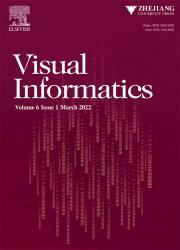DPKnob: A visual analysis approach to risk-aware formulation of differential privacy schemes for data query scenarios
IF 3.8
3区 计算机科学
Q2 COMPUTER SCIENCE, INFORMATION SYSTEMS
引用次数: 0
Abstract
Differential privacy is an essential approach for privacy preservation in data queries. However, users face a significant challenge in selecting an appropriate privacy scheme, as they struggle to balance the utility of query results with the preservation of diverse individual privacy. Customizing a privacy scheme becomes even more complex in dealing with queries that involve multiple data attributes. When adversaries attempt to breach privacy firewalls by conducting multiple regular data queries with various attribute values, data owners must arduously discern unpredictable disclosure risks and construct suitable privacy schemes. In this paper, we propose a visual analysis approach for formulating privacy schemes of differential privacy. Our approach supports the identification and simulation of potential privacy attacks in querying statistical results of multi-dimensional databases. We also developed a prototype system, called DPKnob, which integrates multiple coordinated views. DPKnob not only allows users to interactively assess and explore privacy exposure risks by browsing high-risk attacks, but also facilitates an iterative process for formulating and optimizing privacy schemes based on differential privacy. This iterative process allows users to compare different schemes, refine their expectations of privacy and utility, and ultimately establish a well-balanced privacy scheme. The effectiveness of this study is verified by a user study and two case studies with real-world datasets.
DPKnob:针对数据查询场景,采用可视化分析方法制定具有风险意识的差异化隐私方案
差异隐私是数据查询中保护隐私的重要方法。然而,用户在选择合适的隐私方案时面临着巨大的挑战,因为他们很难在查询结果的实用性和保护不同个人隐私之间取得平衡。在处理涉及多个数据属性的查询时,定制隐私方案变得更加复杂。当对手试图通过使用各种属性值进行多个常规数据查询来突破隐私防火墙时,数据所有者必须努力辨别不可预测的泄露风险,并构建合适的隐私方案。在本文中,我们提出了一种可视化分析方法,用于制定差分隐私方案。我们的方法支持在查询多维数据库统计结果时识别和模拟潜在的隐私攻击。我们还开发了一个名为 DPKnob 的原型系统,该系统集成了多个协调视图。DPKnob 不仅允许用户通过浏览高风险攻击来交互式地评估和探索隐私暴露风险,还促进了基于差异隐私制定和优化隐私方案的迭代过程。这种迭代过程允许用户比较不同的方案,完善他们对隐私和效用的预期,并最终建立一个平衡的隐私方案。这项研究的有效性通过一项用户研究和两项真实数据集案例研究得到了验证。
本文章由计算机程序翻译,如有差异,请以英文原文为准。
求助全文
约1分钟内获得全文
求助全文
来源期刊

Visual Informatics
Computer Science-Computer Graphics and Computer-Aided Design
CiteScore
6.70
自引率
3.30%
发文量
33
审稿时长
79 days
 求助内容:
求助内容: 应助结果提醒方式:
应助结果提醒方式:


